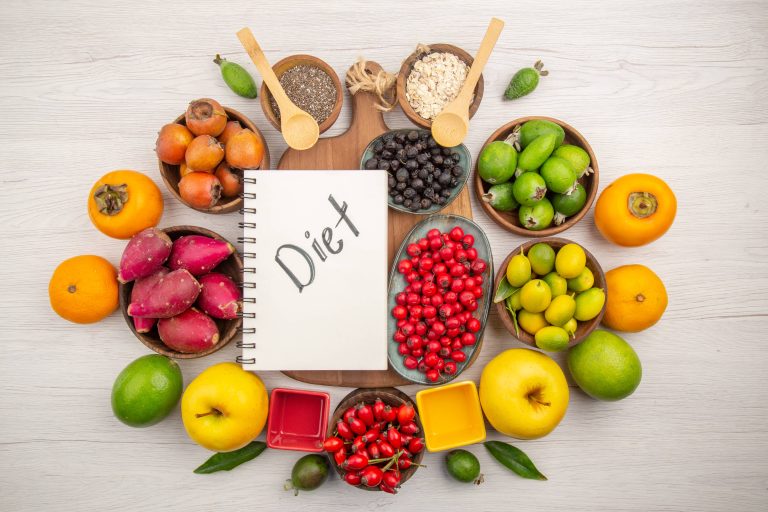
In the quest for weight loss, many people focus on cutting calories, increasing physical activity, or following the latest diet trends. However, one often overlooked yet highly effective strategy is increasing fiber intake. Dietary fiber, a type of carbohydrate found in plant-based foods, plays a crucial role in maintaining a healthy weight and promoting overall well-being. In this blog post, we will explore how increasing fiber intake can aid in weight loss, the types of fiber, and practical tips to incorporate more fiber into your diet.
Understanding Dietary Fiber
Dietary fiber is the indigestible part of plant foods that passes through the digestive system relatively intact. It is categorized into two main types: soluble and insoluble fiber. Each type has unique properties and health benefits.
1. Soluble Fiber: This type of fiber dissolves in water to form a gel-like substance. It is found in foods like oats, beans, lentils, apples, and citrus fruits. Soluble fiber helps lower blood cholesterol and glucose levels, making it beneficial for heart health and diabetes management.
2. Insoluble Fiber: This type of fiber does not dissolve in water and adds bulk to the stool, promoting regular bowel movements. It is found in whole grains, nuts, seeds, and vegetables like carrots and celery. Insoluble fiber is essential for maintaining a healthy digestive system.
How Fiber Aids in Weight Loss
1. Promotes Satiety: One of the primary ways fiber aids in weight loss is by promoting a feeling of fullness or satiety. High-fiber foods take longer to chew and digest, which can help you feel full for longer periods. This can reduce overall calorie intake and prevent overeating.
2. Regulates Blood Sugar Levels: Fiber, particularly soluble fiber, slows down the absorption of sugar in the bloodstream. This helps prevent spikes in blood sugar levels, which can lead to cravings and overeating. Stable blood sugar levels are crucial for managing hunger and maintaining energy levels throughout the day.
3. Reduces Caloric Density: Foods high in fiber are often less calorie-dense, meaning they provide fewer calories per gram compared to low-fiber foods. By choosing high-fiber foods, you can consume larger portions without consuming excessive calories, making it easier to maintain a calorie deficit for weight loss.
4. Supports Gut Health: A healthy gut microbiome is essential for weight management. Fiber acts as a prebiotic, feeding the beneficial bacteria in the gut. A diverse and balanced gut microbiome can influence metabolism, inflammation, and fat storage, all of which play a role in weight management.
Practical Tips to Increase Fiber Intake
1. Start Your Day with Fiber: Begin your day with a high-fiber breakfast, such as oatmeal topped with fruits and nuts or a smoothie with spinach, chia seeds, and berries. This sets a positive tone for the rest of the day and helps keep hunger at bay.
2. Choose Whole Grains: Opt for whole grains instead of refined grains. Whole grains like brown rice, quinoa, and whole wheat bread retain their fiber content, while refined grains have been stripped of their fiber-rich outer layer.
3. Incorporate Legumes: Beans, lentils, and chickpeas are excellent sources of fiber and can be added to salads, soups, and stews. They are also a great plant-based protein source, making them a versatile addition to any diet.
4. Snack on Fruits and Vegetables: Keep fresh fruits and vegetables on hand for snacking. Apples, pears, carrots, and celery sticks are convenient, fiber-rich options that can satisfy hunger between meals.
5. Add Seeds and Nuts: Sprinkle chia seeds, flaxseeds, or almonds on yogurt, salads, or cereal for an extra fiber boost. These foods are also rich in healthy fats, which can further aid in satiety.
6. Stay Hydrated: Drinking plenty of water is essential when increasing fiber intake. Fiber absorbs water, and adequate hydration helps prevent digestive discomfort and supports the movement of fiber through the digestive system.
Potential Challenges and Considerations
While increasing fiber intake offers numerous benefits, it’s important to do so gradually. A sudden increase in fiber can lead to digestive discomfort, such as bloating and gas. To avoid this, gradually introduce fiber-rich foods into your diet and allow your digestive system to adjust.
Additionally, individuals with certain medical conditions, such as irritable bowel syndrome (IBS), may need to be cautious with certain types of fiber. Consulting with a healthcare professional or registered dietitian can provide personalized guidance based on individual health needs.
Conclusion
Increasing fiber intake is a simple yet effective strategy for weight loss and overall health. By promoting satiety, regulating blood sugar levels, and supporting gut health, fiber can play a significant role in achieving and maintaining a healthy weight. By incorporating a variety of fiber-rich foods into your diet and making gradual changes, you can enjoy the benefits of fiber while supporting your weight loss journey. Remember, a balanced diet and a healthy lifestyle are key to long-term success.









